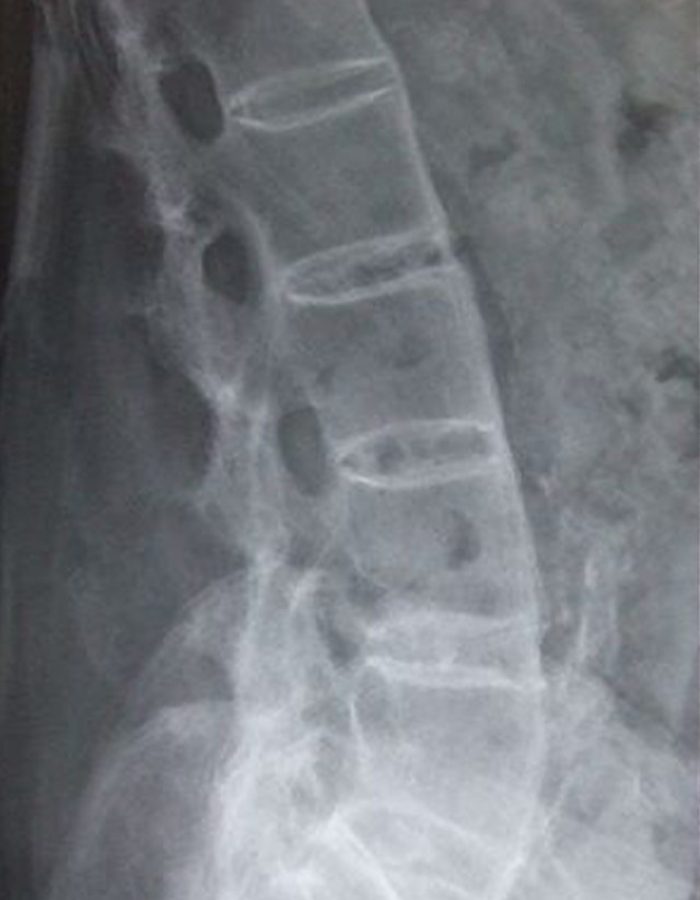TREATMENTS & PROCEDURES
MINIMALLY INVASIVE LUMBAR DECOMPRESSION
MILD® PROCEDURE
A popular treatment for Lumbar Spinal Stenosis
Lumbar spinal stenosis (LSS) is a narrowing of the spinal canal which can lead to compression of neural elements and manifest as lower back pain and leg pain. Up until recently, LSS has been treated with a variety of conservative (pain medications, physical therapy, epidural spinal injections) and invasive (surgical decompression) options. Today, several minimally invasive procedures have expanded the treatment options such as the mild® Procedure that we offer here in South Florida.
The mild® Procedure is an alternative for patients who may not tolerate a more invasive procedure. The mild® Procedure does not affect surgical options for the few patients who do not respond to this treatment. Because of the very minimally invasive approach and targeted subtle decompression, there is minimal or no scar tissue that would increase the risk of possible future open spine surgery. Also, keep in mind that patients undergoing open surgical decompression are no longer candidates for less invasive approaches such as the mild® Procedure. Spine Wellness Centers of America might recommend a patient with lumbar spinal stenosis to start with the mild® Procedure first, especially since it is a highly successful and minimally invasive procedure.

What to expect with the mild® Procedure.
ABOUT mild® PROCEDURE
The mild® procedure provides percutaneous lumbar decompression of the spinal canal without destabilizing adjacent structures and does not involve the use of implants. Using a dorsal approach, the percutaneous mild® system is used to remove small portions of the lamina and selectively debulk the hypertrophic ligamentum flavum. The mild® procedure is performed ipsilaterally through a small 6-gauge port and is generally conducted using local anesthetic and moderate sedation. Contrast medium enhanced fluoroscopic guidance provides visualization throughout the mild® procedure, and decompression is confirmed through visual changes in the epidurogram and improved contrast medium flow. The mild® treatment may then be performed on the contralateral side for bilateral decompression, as well as at multiple levels.
watch mild® Procedure video
Spine and Wellness Centers of America, located in South Florida, offers the mild® procedure to relieve lumbar spinal stenosis.
FREQUENTLY ASKED QUESTIONS ABOUT THE MILD PROCEDURE:
The MILD (Minimally Invasive Lumbar Decompression) procedure is a technique to percutaneously (through the skin) debulk an area near the spinal column called the ligamentum flavum that can contribute to central spinal stenosis. By debulking the area the spinal cord has more room to allow blood flow and oxygen delivery, reducing pain from neurogenic claudication (pain related to reduced oxygen and blood flow to the spinal cord and exiting nerves).
You will meet a pain management physician for an evaluation, which will include an interview, a physical exam, a review of your neuroimaging, and potentially a preoperative anesthesia evaluation (which may include an EKG and lab work). If a MILD procedure is indicated, a health care provider will explain the procedure in detail, including possible complications and side effects; the health care provider will answer any questions you may have. Information about the procedure will be given for you to take home.
If you take any blood thinners (Coumadin, Heparin, Lovenox, Aspirin, Plavix, Ibuprofen, Motrin, Aggrastat, Ticlid, Brillinta, etc) inform your physician during your preoperative evaluation. These medications need to be discontinued for 5 days before the procedure to reduce the risk of bleeding.
Please be aware that smokers are recognized to have a significantly higher risk of postoperative wound healing problems, as well as operative and postoperative bleeding. Smoking disrupts the normal function of basic body systems that contribute to bone formation. Smokers must understand and agree to discontinue smoking for at least two weeks before and after surgery. Although it helps to stop smoking for several weeks before and after surgery, this does not eliminate the increased risk resulting from long-term smoking.
- You must begin fasting midnight the night before the procedure. You may take your morning medications with a sip of water.
- If you have diabetes and use insulin, you must adjust the dosage of your insulin the day of the procedure, aided by your primary care physician.
- If you are nursing or pregnant, please inform your physician.
- You will need to bring a responsible adult with you to drive you home after the procedure. You should not operate machinery or drive for at least 24 hours after the procedure.
- Before the procedure, an intravenous line (IV) will be placed in a vein. Mild sedatives, pain medication, and antibiotics may be administered through the IV.
- The procedure takes between 30 to 90 minutes
- You will be lying on your stomach with your arms by your head.
- The procedure area will be washed with an antiseptic solution and then the area will be draped to maintain sterility.
- You will begin the get sedation through your IV.
- The procedure entry site will be numbered using a local anesthetic.
- The physician will use an X-ray to guide the placement of the instruments to access the hypertrophied ligamentum flavum.
- An anesthesia care provider will monitor your vitals throughout the procedure.
- You will be transported to the recovery room for approximately 30 minutes of observation.
- A nurse will check your vital signs.
- The nurse will give you a beverage and a snack while reviewing the discharge instructions with
- you. Make sure you understand the discharge instructions and follow them as outlined.
- If you had IV sedation or oral Valium, you cannot drive or drink alcohol for twenty-four hours.
- Do not sign important documents for 24 hours.
- If you are taking blood-thinning medication and stopped them for this procedure you may resume taking the blood thinners again 24 hours after the procedure.
- You need to schedule a follow-up appointment in 2 weeks to evaluate your symptoms and response to the procedure.
- The incision site on your back may be sore and associated with some mild redness and swelling.
- This is not uncommon. You may use a cold pack/ice at the injection site for 15 minutes 2-3 times per day over the next 3 days. Do not apply ice directly to the skin.
- You may be given a pain medication that you can take for after surgery pain.
- Relief from spinal stenosis after the procedure may be apparent within the first 72 hours following the procedure. Recovery from the MILD procedure can be up to 6 weeks.
- Advance your diet as tolerated to avoid nausea.
- You may experience mild pain or discomfort following the procedure. The most common complaints include muscle spasms, tenderness to the incision area and inflammation. Your activities should be restricted for the first few days following the procedure. Rest is recommended during the first 24 hours; avoid submerging surgical site in water for the first 3 days after the procedure. No bath or hot-tubs/pools for the first week. Showering is permitted, but you should avoid wetting the site for the first few days.
Notify Physician/contact Pain Department if:
- Bleeding occurs
- Fever of greater than 101.2
- Drainage from site
- Swelling, tenderness or numbness, or weakness in your legs
- Problem with bladder or bowel control.
FOR NON-EMERGENCIES MONDAY-FRIDAY 9:00 am to 5:00 pm, call (305) 974-5533.
FOR EMERGENCIES call 911 or go to the local emergency room
Contact South Florida's
MILD PROCEDURE SPECIALISTS

REQUEST AN APPOINTMENT
